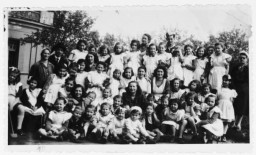You searched for: budapest
<< Previous | Displaying results 76-100 of 135 for "budapest" | Next >>
-
Art and Survival: György Beifeld's Visual Memoir from the Russian Front, 1942–1943
ArticleGyörgy Beifeld, a Jewish conscript in the Hungarian army, created a visual memoir of his experiences on the eastern front in 1942–1943 as a member of a forced-labor battalion .

-
Sighet
ArticleLearn about the history of Sighet, birthplace of Elie Wiesel. The Jewish population of Sighet was deported to Auschwitz in May 1944. Most of the deportees were gassed on arrival.
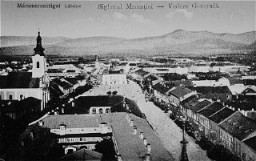
-
Beno Helmer
ID CardBeno was the oldest of three children in a Jewish family. His mother, originally from Austria, came to Czechoslovakia after World War I. Beno's father, a Swedish Jew, arrived there in search of work and became a successful merchant. The German-speaking Helmer home was frequently full of guests. Every day some students from the local rabbinical academy were invited to join the family for a meal. 1933-39: Beno's parents sent him to Budapest to attend high school. Later, because of his talent with languages,…
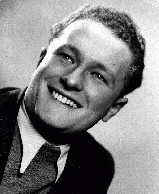
-
Maria Schimek Dicker
ID CardMaria's Jewish family lived in a Slovakian manufacturing town. When her father's match factory failed, the family of seven moved to Budapest. In her early twenties, Maria opened a flower shop, but she gave it up when she married and moved to Ujpest, outside Budapest. Maria then stayed at home to raise her five children. Her husband owned a large furniture store, and she often gave him business advice. 1933-39: Maria loves having all her grown children gathered around her at the dinner table, enjoying her…
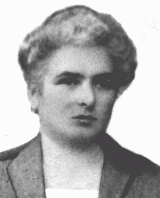
-
Kato Dicker Nagy
ID CardThe fourth of five children, Kato was born to a Jewish family who owned a successful furniture store and lumberyard in Ujpest, five miles from Budapest. As a young girl, Kato enjoyed singing and playing the violin in her family "orchestra" in their large home. She was also athletic, and loved to swim, bicycle and play tennis. Best of all, Kato enjoyed rowing on the Danube with her friends. 1933-39: Newly married, Kato moved to Zagyvapalfalva, a town northeast of Budapest with only five or six Jewish…
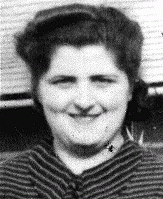
-
Henryk Lubelski
ID CardHenryk was raised in a religious Jewish family. His father was a cantor, and his parents placed an emphasis on education. In 1916 the Lubelskis moved to Rawicz, a town in German-occupied Poland. Henryk was first in his class in secondary school, where he also excelled in wrestling and soccer. After graduating, Henryk became an apprentice in a business. 1933-39: In 1935 Henryk's father secured a good position in the city of Katowice. There, Henryk worked in the sausage business. Since Katowice was close to…
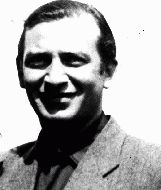
-
Agnes Mandl
ID CardWhen Agnes was a teenager, she attended Budapest's prestigious Baar Madas private school, run by the Hungarian Reformed Church. Although she was the only Jewish student there, Agnes' parents believed that the superior education at the school was important for their daughter. Agnes' father, a textile importer, encouraged his daughter to think for herself. 1933-39: In 1936 Agnes studied educational techniques with Signora Maria Montessori in Italy and earned a diploma so she could teach. Hoping to improve…
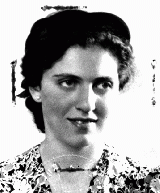
-
Aranka Ecksdein Muhlrad
ID CardAranka was the youngest of 10 children born to Jewish parents living in the highlands of Slovakia. While visiting Budapest to attend her sister's marriage, she was introduced to Jeno Muhlrad, a pharmacist. They were married and the couple moved in with Jeno's father and sisters who lived in Ujpest, a suburb of Budapest. Aranka had two children--Eva, born in 1924, and Andras, born six years later. 1933-39: Aranka's husband has leased his own pharmacy in downtown Ujpest so they can finally afford to move…
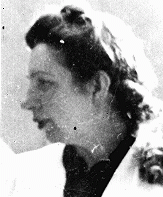
-
Stephen S. Wise
ArticleStephen Wise (1874–1949) was a prominent Jewish leader in the United States between 1933-1945. Learn more about his work during the Holocaust.

-
American Jewish Joint Distribution Committee and Refugee Aid
ArticleA relief organization, the American Jewish Joint Distribution Committee (JDC or Joint) was established in 1914. Learn about its activities before, during, and after WWII.
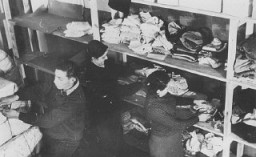
-
Jewish Aid and Rescue
ArticleJewish groups worldwide helped rescue thousands during the Holocaust. Read more about efforts to save Jews from Nazi persecution and death.
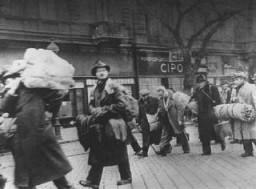
-
1944: Key Dates
ArticleExplore a timeline of key events during 1944 in the history of Nazi Germany, World War II, and the Holocaust.
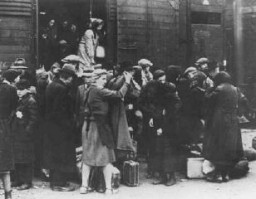
-
Rudolf (Rezső) Kasztner
ArticleLearn more about Rudolf (Rezső) Kasztner (1906-1957) during World War II and his controversial efforts to help refugees escape Hungary in 1944.

-
Photographer Yevgeny Khaldei
Media EssayPhotographer and renowned photojournalist Yevgeny Khaldei covered the events of World War II from Moscow to Berlin. Explore some of his images.

-
Deportations
ArticleAs part of the “Final Solution,” Nazi Germany organized systematic deportations of Jews from across Europe to ghettos and killing centers. Read more.
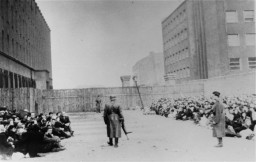
-
Deportation of Hungarian Jews
Timeline EventMay 15-July 9, 1944. On this date, Hungarian officials (under guidance from the German SS) deported some 440,000 Hungarian Jews.

-
Istvan Geroe
ID CardIstvan was born to a Jewish family in the small agricultural city of Torokszentmiklos, about 65 miles from Budapest. Istvan worked for the Hungarian railroads during World War I, and afterwards earned a degree in pharmacology. In the 1920s Istvan married Barbara Nemeth and they settled in Torokszentmiklos. In 1929 the couple had a son, Janos. 1933-39: During the early 1930s, after the onset of the Depression, Istvan helped his father in the family's grain exporting business. In 1933 Istvan and Barbara…

-
Ilona Haas Geroe
ID CardIlona was one of seven children born to a Jewish family in the city of Szeged, about 100 miles south of Budapest. Her father was an accountant. At the turn of the century many of Ilona's father's relatives emigrated to the United States, but Ilona's father decided to stay. Ilona also became an accountant and got a job in Szeged. 1933-39: Ilona's work as an accountant kept her busy but her free time was spent enjoying music and sports. She also began to study English since so many of her relatives had…
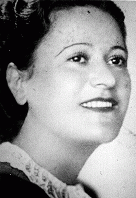
-
Josef Deutsch
ID CardJosef was born to Yiddish-speaking, religious Jewish parents in the town of Viseu de Sus in Transylvania, a region of Romania that belonged to Hungary until 1918. In 1890 he married Emma Geisler from the nearby town of Bistrita. The couple had four children and after 1910 the family lived at #4 Hid Street in Viseu de Sus. Josef was a merchant who owned a stall in Viseu de Sus's public market. 1933-39: By 1939 two of Josef's grown sons had moved to the Hungarian capital of Budapest. Josef and his wife…
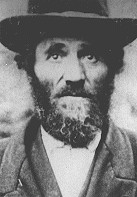
-
Chava Lea Deutsch
ID CardChava Lea was born Emma Geisler to Yiddish-speaking, religious Jewish parents. The Deutsch family lived in the village of Budacu de Sus in Transylvania, a region of Romania that belonged to Hungary until 1918. She grew up in the town of Bistrita. In 1890 she married Josef Deutsch, a salesman from the town of Viseu de Sus, where the couple moved in 1910. Chava and Josef raised four children. 1933-39: By 1939 two of Chava Lea's grown sons had moved to the Hungarian capital of Budapest. Chava Lea and her…

-
Laszlo Schwed
ID CardLaszlo was raised by Hungarian-speaking Jewish parents in the town of Kiskunfelegyhaza in southeastern Hungary. He opened a business selling goose meat, feathers, down and quilts. In 1931 he married Anna Mahrer, from Budapest, and they had a daughter in January 1932. 1933-39: Laszlo and Anna had a second child, a son. They raised their two children in a comfortable home. Kiskunfelegyhaza was located in a rural part of Hungary. In May 1939, the Hungarian government enacted a law that defined Jews as alien…
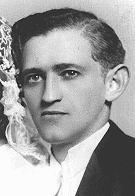
-
Adolf Eichmann: Key Dates
ArticleAdolf Eichmann was a key figure in implementing the “Final Solution,” the Nazi plan to kill Europe's Jews. Learn more through key dates and events.

-
Death Marches
ArticleAs Allied forces approached Nazi camps in the last months of WWII, the SS organized brutal “death marches” (forced evacuations) of concentration camp inmates.

-
1945: Key Dates
ArticleExplore a timeline of key events during 1945 in the history of Nazi Germany, World War II, the Holocaust, and liberation and the aftermath of the Holocaust.

-
Zsofi Brunn (back row, center) poses with the orphans under her care
PhotoZsofi Brunn and members of her family were deported from Hungary to Auschwitz-Birkenau in June 1944. Her husband and mother were killed upon arrival. Zsofi and her daughter Anna were transferred to a labor camp in Czechosovakia. They were eventually liberated by Soviet forces in May 1945. Zsofi and Anna returned to Hungary. They moved to Rakosszentmihaly, near Budapest. There, Anna finished high school, and Zsofi directed a Jewish orphanage. This photo shows Zsofi (back row, center) posing with the…
